Science in the medieval Islamic world
From Wikipedia, the free encyclopedia
This
article is about the history of science in the Islamic civilization
between the 8th and 16th centuries. For information on science in the
context of Islam, see Islam and science.
| History of science |
|---|
Scientists within the Islamic civilization were of diverse ethnicities. Most were Persians,[2][3][4][5] Arabs,[4] Moors, Assyrians, and Egyptians. They were also from diverse religious backgrounds. Most were Muslims,[6][7][8] but there were also some Christians,[9] Jews[9][10] and irreligious.[11][12]
Science in the context of Islamic civilization
The term Islam refers to the religion of Islam, and also the Islamic civilization which formed around it.[13] Islamic civilization is composed of many faiths and cultures, although the proportion of Muslims among its population has increased over time.[14]The religion of Islam was founded during the lifetime of the Islamic prophet Muhammad. After his death in 632, Islam continued to expand under the leadership of its Muslim rulers, known as Caliphs. Struggles for leadership of the growing religious community began at this time, and continue today. The early periods of Islamic history after the death of Muhammad can be referred to as the Umayyad Caliphates.[15]
During the Umayyad Caliphate, the Islamic empire began to consolidate its territorial gains. Arabic became the language of administration. The Arabs became a ruling class assimilated into their new surroundings across the empire, rather than occupiers of conquered territories.[16]
The crystallization of Islamic thought and civilization
Through the Umayyad and, in particular, the succeeding Abbasid Caliphate's early phase, lies the period of Islamic history known as the High Caliphate. This era can be identified as the years between 692 and 945,[15] and ended when the caliphate was marginalized by local Muslim rulers in Baghdad – its traditional seat of power. From 945 onward until the sacking of Baghdad by the Mongols in 1258, the Caliph continued on as a figurehead, with power devolving more to local amirs.[17]During the High Caliphate, stable political structures were established and trade flourished. The Chinese were undergoing a revolution in commerce, and the trade routes between the lands of Islam and China boomed both overland and along the coastal routes between the two civilizations.[17] Islamic civilization continued to be primarily based upon agriculture, but commerce began to play a more important role as the caliphate secured peace within the empire. The wars and cultural divisions that had separated peoples before the Arab conquests gradually gave way to a new civilization encompassing diverse ethnic and religious backgrounds. This new Islamic civilization used the Arabic language as transmitters of culture and Arabic increasingly became the language of commerce and government.[18]
Over time, the great religious and cultural works of the empire were translated into Arabic, the population increasingly understood Arabic, and they increasingly professed Islam as their religion. The cultural heritages of the area included strong Hellenic, Indic, Asyrian and Persian influences. The Greek intellectual traditions were recognized, translated and studied broadly. Through this process, the population of the lands of Islam gained access to all the important works of all the cultures of the empire, and a new common civilization formed in this area of the world, based on the religion of Islam. A new era of high culture and innovation ensued, where these diverse influences were recognized and given their respective places in the social consciousness.[19]
Domains of thought and culture in the High Caliphate
The pious scholars of Islam, men and women collectively known as the ulama, were the most influential element of society in the fields of Sharia law, speculative thought and theology. Their pronouncements defined the external practice of Islam, including prayer, as well as the details of the Islamic way of life. They held strong influence over government, and especially the laws of commerce. They were not rulers themselves, but rather keepers and upholders of the rule of law.[20]Conversely, among the religious, there were inheritors of the more charismatic expressions of Christianity and Buddhism, in the Sufi orders. These Muslims had a more informal and varied approach to their religion. Islam also expressed itself in other, more esoteric forms that could have significant influence over public discourse during times of social unrest.[21]
Among the more worldly, adab – polite, worldly culture — permeated the lives of the professional, the courtly and genteel classes. Art, literature, poetry, music and even some aspects of religion were among the areas widely appreciated by those of a more refined taste among Muslim and non-Muslim alike. New trends and new topics flowed from the center of the Baghdad courts, to be adopted both quickly and widely across the lands of Islam.[21]
Apart from these other traditions stood falsafa; Greek philosophy, inclusive of the sciences as well as the philosophy of the ancients. This science had been widely known across Mesopotamia and Iran since before the advent of Islam. These "sciences" were in many ways contrary to the teachings of Islam and the ways of the adab, but were nonetheless highly regarded in society. The ulama tolerated these outlooks and practices with reservation. Some faylasufs made a good living in the practices of astrology and medicine.[21]
Medieval Islamic science
Notable fields of inquiry
The roots of Islamic science drew primarily upon Arab, Persian, Indian and Greek learning. The extent of Islamic scientific achievement is not as yet fully understood, but it is extremely vast.[1]These achievements encompass a wide range of subject areas; most notably[1]
Other notable areas, and specialized subjects, of scientific inquiry include
- Physics
- Alchemy and chemistry
- Cosmology
- Ophthalmology
- Geography and cartography
- Sociology
- Psychology
Notable scientists
In medieval Islam, the sciences, which included philosophy, were viewed holistically. The individual scientific disciplines were approached in terms of their relationships to each other and the whole, as if they were branches of a tree. In this regard, the most important scientists of Islamic civilization have been the polymaths, known as hakim or sages. Their role in the transmission of the sciences was central.[22]The hakim was most often a poet and a writer, skilled in the practice of medicine as well as astronomy and mathematics. These multi-talented sages, the central figures in Islamic science, elaborated and personified the unity of the sciences. They orchestrated scientific development through their insights, and excelled in their explorations as well.[22]
- Jabir ibn Hayyan (ca. 8th – 9th centuries) was an alchemist who used extensive experimentation and produced many works on science and alchemy which have survived to the present day. Jabir described the laboratory techniques and experimental methods of chemistry. He identified many substances including sulfuric and nitric acid. He described processes including sublimation, reduction and distillation. He utilized equipment such as the alembic and the retort. There is considerable uncertainty as to the actual provenance of many works that are ascribed to him.[23][24]

Drawing of Self trimming lamp in Ahmad ibn Mūsā ibn Shākir's treatise on mechanical devices. The manuscript was written in Arabic.
- The Banu Musa brothers, Jafar-Muhammad, Ahmad and al-Hasan (ca. early 9th century) were three Persian sons of a colorful astronomer and astrologer. They were scholars close to the court of caliph al-Mamun, and contributed greatly to the translation of ancient works into Arabic. They elaborated the mathematics of cones and ellipses, and performed astronomic calculations. Most notably, they contributed to the field of automation with the creations of automated devices such as the ones described in their Book of Ingenious Devices.[25][26][27]
- Ibn Ishaq al-Kindi (801–873) was a philosopher and polymath scientist heavily involved in the translation of Greek classics into Arabic. He worked to reconcile the conflicts between his Islamic faith and his affinity for reason; a conflict that would eventually lead to problems with his rulers. He criticized the basis of alchemy and astrology, and contributed to a wide range of scientific subjects in his writings. He worked on cryptography for the caliphate, and even wrote a piece on the subject of time, space and relative movement.[28]
- Hunayn ibn Ishaq (809–873) was one of the most important translators of the ancient Greek works into Arabic. He was also a physician and a writer on medical subjects. His translations interpreted, corrected and extended the ancient works. Some of his translations of medical works were used in Europe for centuries. He also wrote on medical subjects, particularly on the human eye. His book Ten Treatises on the Eye was influential in the West until the 17th century.[29]
- Abbas ibn Firnas (810–887) was an Andalusian scientist, musician and inventor. He developed a clear glass used in drinking vessels, and lenses used for magnification and the improvement of vision. He had a room in his house where the sky was simulated, including the motion of planets, stars and weather complete with clouds, thunder and lightning. He is most well known for reportedly surviving an attempt at controlled flight.[30]
- Thabit ibn Qurra (835–901) was a Sabian translator and mathematician from Harran, in what is now Turkey. He is known for his translations of Greek mathematics and astronomy, but as was common, he also added his own work to the translations. He is known for having calculated the solution to a chessboard problem involving an exponential series.[31]
- al-Khwarizmi (ca. 8th–9th centuries) was a Persian mathematician,[32] geographer and astronomer. He is regarded as the greatest mathematician of Islamic civilization.. He was instrumental in the adoption of the Indian numbering system, later known as Arabic numerals. His developed algebra, which also had Indian antecedents, by introducing methods of simplifying the equations. He used Euclidian geometry in his proofs.[33]
- al-Battani (850–922) was an astronomer who accurately determined the length of the solar year. He contributed to numeric tables, such as the Tables of Toledo, used by astronomers to predict the movements of the sun, moon and planets across the sky. Some of Battani's astronomic tables were later used by Copernicus. Battani also developed numeric tables which could be used to find the direction of Mecca from different locations. Knowing the direction of Mecca is important for Muslims, as this is the direction faced during prayer.[34]
- Abu Bakr Zakariya al-Razi (ca. 854–925/935) was a Persian born in Rey, Iran. He was a polymath who wrote on a variety of topics, but his most important works were in the field of medicine. He identified smallpox and measles, and recognized fever was part of the body's defenses. He wrote a 23-volume compendium of Chinese, Indian, Persian, Syriac and Greek medicine. al-Razi questioned some aspects of the classical Greek medical theory of how the four humors regulate life processes. He challenged Galen's work on several fronts, including the treatment of bloodletting. His trial of bloodletting showed it was effective; a result we now know to be erroneous.[35]
- al-Farabi (ca. 870–950) was a Persian/Iranian (born in Farab, Iran) rationalist philosopher and mathematician who attempted to describe, geometrically, the repeating patterns popular in Islamic decorative motifs. His book on the subject is titled Spiritual Crafts and Natural Secrets in the Details of Geometrical Figures.[36]
- ibn Sina (Avicenna) (908–946) was a Persian physician, astronomer, physicist and mathematician from Bukhara, Uzbekistan. In addition to his master work, The Canon of Medicine, he also made important astronomical observations, and discussed a variety of topics including the different forms energy can take, and the properties of light. He contributed to the development of mathematical techniques such as Casting out nines.[37]
- al-Zahrawi (936–1013) was an Andalusian surgeon who is known as the greatest surgeon of medieval Islam. His most important surviving work is referred to as al-Tasrif (Medical Knowledge). It is a 30 volume set discussing medical symptoms, treatments, and mostly pharmacology, but it is the last volume of the set which has attracted the most attention over time. This last volume is a surgical manual describing surgical instruments, supplies and procedures. Scholars studying this manual are discovering references to procedures previously believed to belong to more modern times.[38]
- ibn al-Haytham (965–1040) was an Iranian scientist born in Basra, Iraq (during Iranian Buyid Dynasty) and years later moved to Egypt as an adult. Hasan Haytham worked in several fields, but is now known primarily for his achievements in astronomy and optics. He was an experimentalist who questioned the ancient Greek works of Ptolemy and Galen. At times, al-Haytham suggested Ptolomey's celestial model, and Galen's explanation of vision, had problems. The prevailing opinion of the time, Galen's opinion, was that vision involved transmission of light from the eye, an explanation al-Haytham cast doubt upon. He also studied the effects of light refraction, and suggested the mathematics of reflection and refraction needed to be consistent with the anatomy of the eye.[39]
- al-Zarqali (1028–1087) was an Andalusian artisan, skilled in working sheet metal, who became a famous maker of astronomical equipment, an astronomer, and a mathematician. He developed a new design for a highly accurate astrolabe which was used for centuries afterwards. He constructed a famous water clock that attracted much attention in Toledo for centuries. He discovered that the Sun's apogee moves slowly relative to the fixed stars, and obtained a very good estimate[40] for its rate of change.[41]
- Omar Khayyam (1048–1131) was a Persian poet and mathematician who calculated the length of the year to within 5 decimal places. He found geometric solutions to all 13 forms of cubic equations. He developed some quadratic equations still in use. He is well known in the West for his poetry (rubaiyat).[42]
- al-Idrisi (1100–1166) was a Moroccan traveler, cartographer and geographer famous for a map of the world he created for Roger, the Norman King of Sicily. al-Idrisi also wrote the Book of Roger, a geographic study of the peoples, climates, resources and industries of all the world known at that time. In it, he incidentally relates the tale of a Moroccan ship blown west in the Atlantic, and returning with tales of faraway lands.[43]
- ibn al-Nafis (1213–1288) was a physician who was born in Damascus and practiced medicine as head physician at the al-Mansuri hospital in Cairo. He wrote an influential book on medicine, believed to have replaced ibn-Sina's Canon in the Islamic world – if not Europe. He wrote important commentaries on Galen and ibn-Sina's works. One of these commentaries was discovered in 1924, and yielded a description of pulmonary transit, the circulation of blood from the right to left ventricles of the heart through the lungs.[44]
- Nasir al-Din al-Tusi (1201–1274) was a Persian astronomer and mathematician whose life was overshadowed by the Mongol invasions of Genghis Khan and his grandson Helagu. al-Tusi wrote an important revision to Ptolemy's celestial model, among other works. When he became Helagu's astrologer, he was furnished with an impressive observatory and gained access to Chinese techniques and observations. He developed trigonometry to the point it became a separate field, and compiled the most accurate astronomical tables available up to that time.[45]
The views of historians and scholars
On the impact of medieval Islamic science
There are several different views on Islamic science among historians of science.- The traditionalist view, as exemplified by Bertrand Russell,[46] holds that Islamic science, while admirable in many technical ways, lacked the intellectual energy required for innovation and was chiefly important as a preserver of ancient knowledge and transmitter to medieval Europe.
- The revisionist view, as exemplified by Abdus Salam,[47] George Saliba[48] and John M. Hobson[49] holds that a Muslim scientific revolution occurred during the Middle Ages,[50]
- Scholars such as Donald Routledge Hill and Ahmad Y Hassan express the view that Islam was the driving force behind the Muslim achievements,[51]
- According to Dallal, science in medieval Islam was "practiced on a scale unprecedented in earlier human history or even contemporary human history".[52]
- Toby E. Huff[53][54] takes the view that, although Islamic science did produce a number of innovations, it did not lead to the Scientific Revolution.
- Will Durant,[55] Fielding H. Garrison,[56] Hossein Nasr[citation needed] and Bernard Lewis[57][unreliable source?] held that Muslim scientists helped in laying the foundations for an experimental science with their contributions to the scientific method and their empirical, experimental and quantitative approach to scientific inquiry.
On the historiography of medieval Islamic science
The history of science in the Islamic world, like all history, is filled with questions of interpretation.Historians of science generally consider that the study of science in the Islamic world, like all history, must be seen within the particular circumstances of time and place.
- A. I. Sabra opened a recent overview of Arabic science by noting, "I trust no one would wish to contest the proposition that all of history is local history ... and the history of science is no exception."[58]
- The Persian philosopher and historian of science, Seyyed Hossein Nasr saw a more positive connection in "an Islamic science that was spiritual and antisecular" which "point[ed] the way to a new 'Islamic science' that would avoid the dehumanizing and despiritualizing mistakes of Western science."[59][60] Nasr identified a distinctly Muslim approach to science, flowing from Islamic monotheism and the related theological prohibition against portraying graven images. In science, this is reflected in a philosophical disinterest in describing individual material objects, their properties and characteristics and instead a concern with the ideal, the Platonic form, which exists in matter as an expression of the will of the Creator. Thus one can "see why mathematics was to make such a strong appeal to the Muslim: its abstract nature furnished the bridge that Muslims were seeking between multiplicity and unity."[61]
- Some scholars consider the practice to be an example of "boosterism" and object that it "defines the achievements of scholars... in terms of their religion rather than their research."[62]
- While others simply consider it futile. For example, Nasir al-Din Tusi (1201–1274), invented his mathematical theorem, the Tusi Couple, while he was director of Maragheh observatory. Tusi's patron and founder of the observatory was the non-Muslim Mongol conqueror of Baghdad, Hulagu Khan. The Tusi-couple "was first encountered in an Arabic text, written by a man who spoke Persian at home, and used that theorem, like many other astronomers who followed him and were all working in the "Arabic/Islamic" world, in order to reform classical Greek astronomy, and then have his theorem in turn be translated into Byzantine Greek towards the beginning of the 14th century, only to be used later by Copernicus and others in Latin texts of Renaissance Europe."[63]
Role of Christians
Christians especially Nestorian contributed hugely to the Arab Islamic Civilization during the Ummayads and the Abbasids by translating works of Greek philosophers to Syriac and afterwards to Arabic.[64] They also excelled in philosophy, science ( such as Hunayn ibn Ishaq, Qusta ibn Luqa, Masawaiyh, Patriarch Eutychius, Jabril ibn Bukhtishu etc) and theology ( such as Tatian, Bar Daisan, Babai the Great, Nestorius, Toma bar Yacoub etc.) and the personal physicians of the Abbasid Caliphs were often Assyrian Christians such as the long serving Bukhtishu dynasty.[65][66]Role of Persians
As Ibn Khaldun, the fourteenth century Arab historiographer and sociologist suggests, it is a remarkable fact that with few exceptions, most Muslim scholars in the intellectual sciences were Ajams ("Persians"):Thus the founders of grammar were Sibawaih and after him, al-Farisi and Az-Zajjaj. All of them were of Persian descent… they invented rules of (Arabic) grammar … great jurists were Persians … only the Persians engaged in the task of preserving knowledge and writing systematic scholarly works. Thus the truth of the statement of the prophet becomes apparent, 'If learning were suspended in the highest parts of heaven the Persians would attain it' … The intellectual sciences were also the preserve of the Persians, left alone by the Arabs, who did not cultivate them … as was the case with all crafts … This situation continued in the cities as long as the Persians and Persian countries, Iraq, Khorasan and Transoxiana [=modern Central Asia], retained their sedentary culture.—Ibn Khaldun, Muqaddimah, Translated by Franz Rosenthal (III, pp. 311-15, 271-4 [Arabic]; R.N. Frye. p. 91.
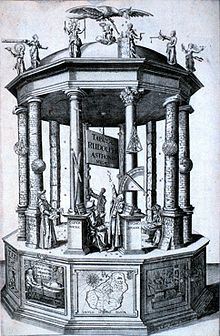
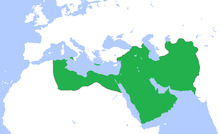
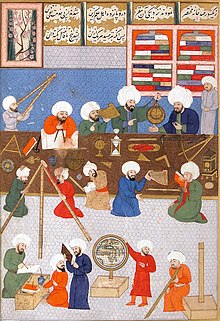
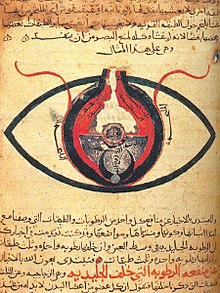
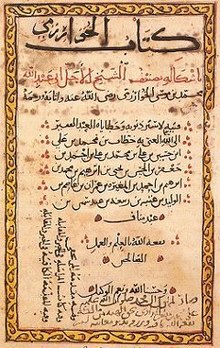
0 comments:
Post a Comment